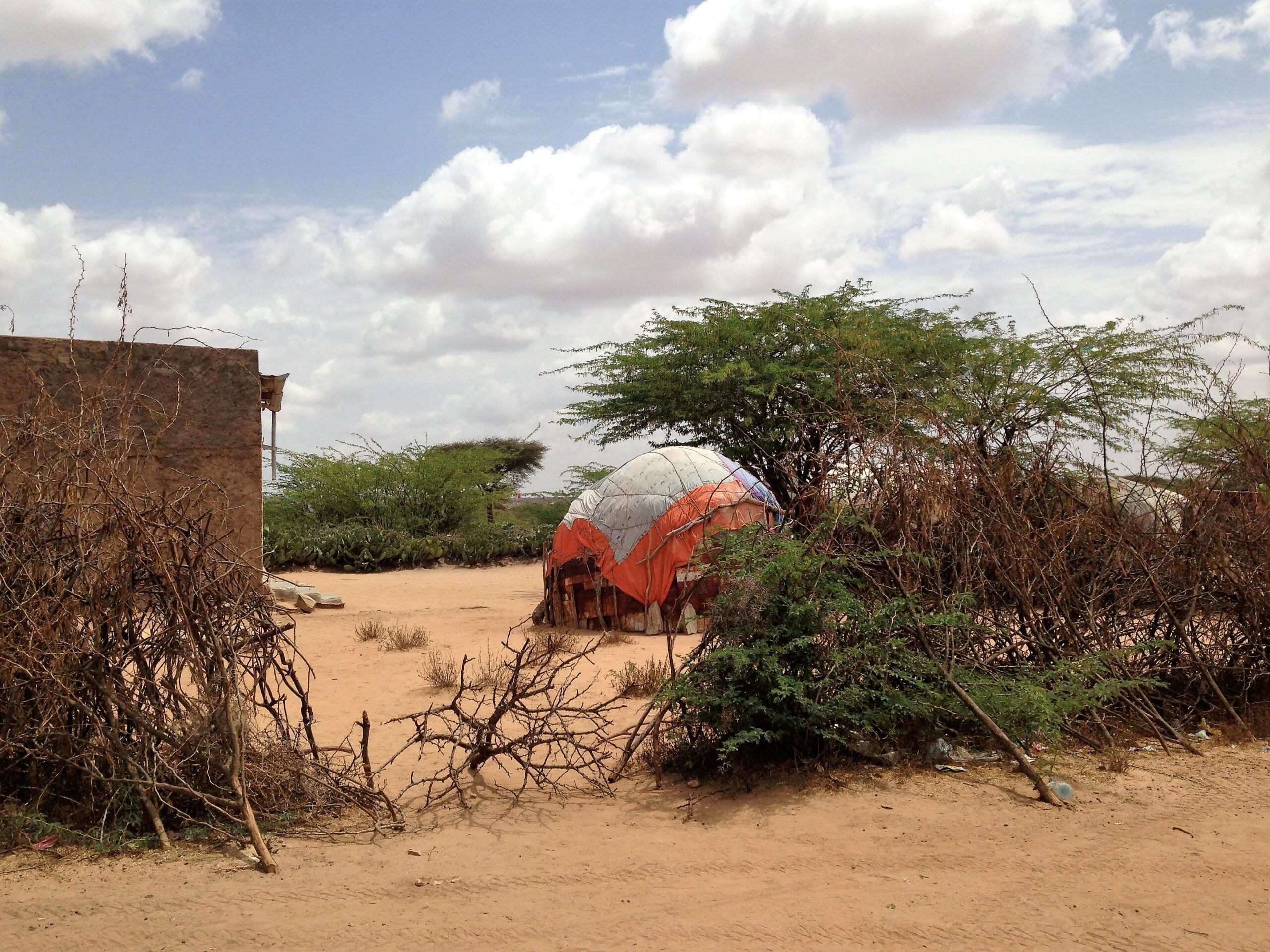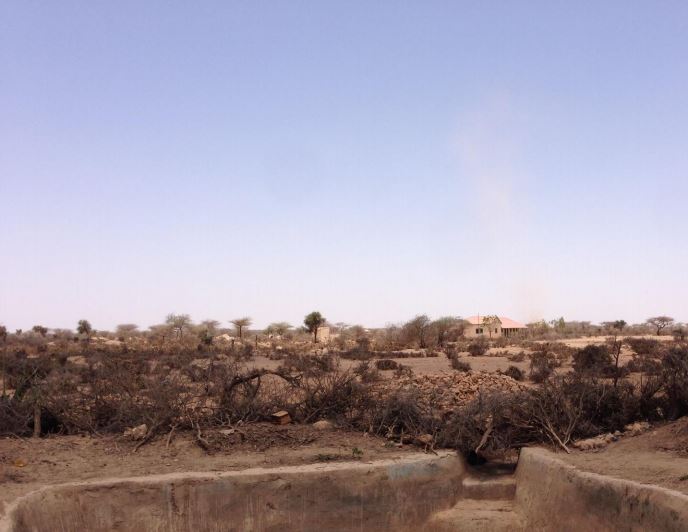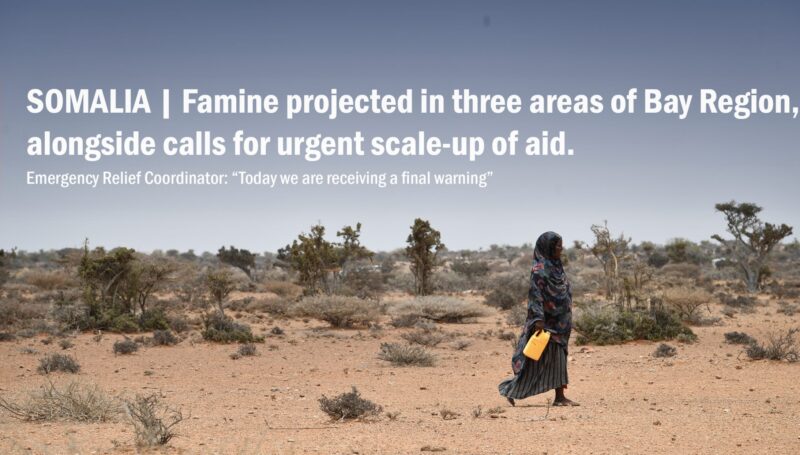
Makeshift shelters in an IDP settlement in Gabiley town, Awdal region. @REACH/2018
Following the drought in 2017, the loss of livestock and access to water led to the large scale movement of populations from rural Somalia to urban areas in search of grazing grounds and livelihood opportunities. Today, more than two million people are estimated to be displaced in settlements, adding a further strain on already established displacement sites and services in urban centres across Somalia.
Due to limited information on the exact locations of the sites of the internally displaced populations (IDPs) and their needs, REACH launched the first round of the Detailed Site Assessment (DSA) in Somalia, in coordination with the Camp Coordination and Camp Management Cluster. The Severity of needs in IDP-hosting districts assessment targeted all accessible urban and semi-urban areas and used a gridded search pattern approach in order to ensure that all existing sites were successfully identified and covered. Furthermore, each site assessment included key informant interviews with one community leader and one women’s representative. The first round of the DSA took place from September 2017 to March 2018, during which 1,843 sites in 48 districts across Somalia were assessed.
According to REACH findings, the majority of districts had a medium level of needs, and no sites lacked access to all basic needs and services. Yet, one in three districts was identified as having high needs, and only one district was reported to have low needs. Across all assessed districts, health and nutrition were the most critical needs, followed by site management, shelter, and non-food-items such as blankets, cooking utensils, and hygiene items.
To identify the most at-risk sites and districts and directly inform aid response prioritisation, REACH developed a severity scoring system based on these findings. This system enables comparison of needs within and between locations and sectors, helping aid partners’ prioritisation and response efforts. Indicators used for this scoring system include access to shelter support, sufficient latrines and handwashing facilities, distribution of food, access to health and education facilities, and the risk of eviction.
Building on this first round of data collection, a second REACH DSA assessment will start in September 2018, enabling a continued monitoring of humanitarian needs in displacement sites across sectors and districts. Assessments of these sites over time will be crucial to support humanitarian responses, ensuring they are adapted to the rapidly-changing displacement patterns in Somalia.
For a more information on our work on Somalia, visit REACH Resource Centre and read the full Severity of needs in IDP-hosting districts report.








